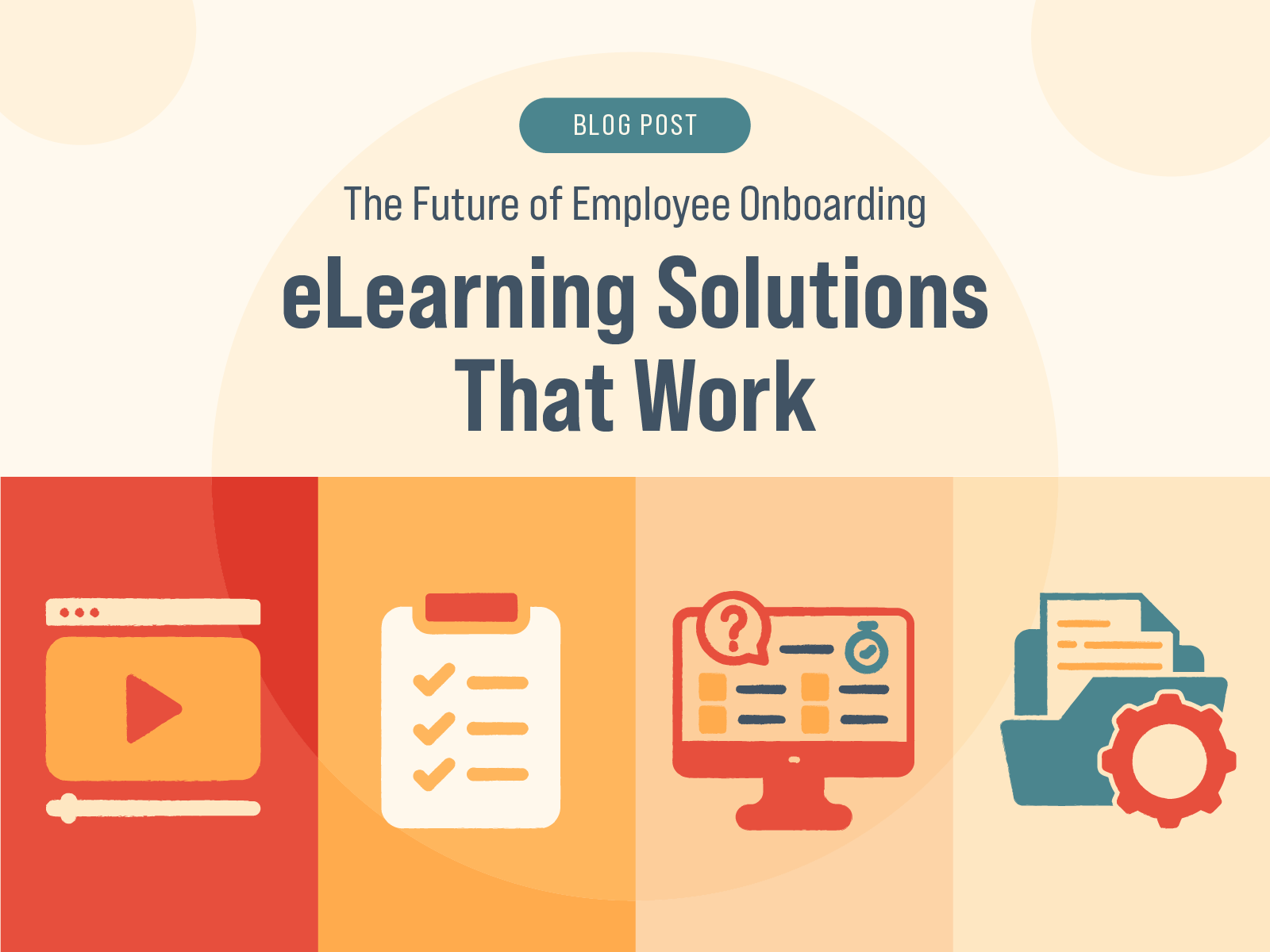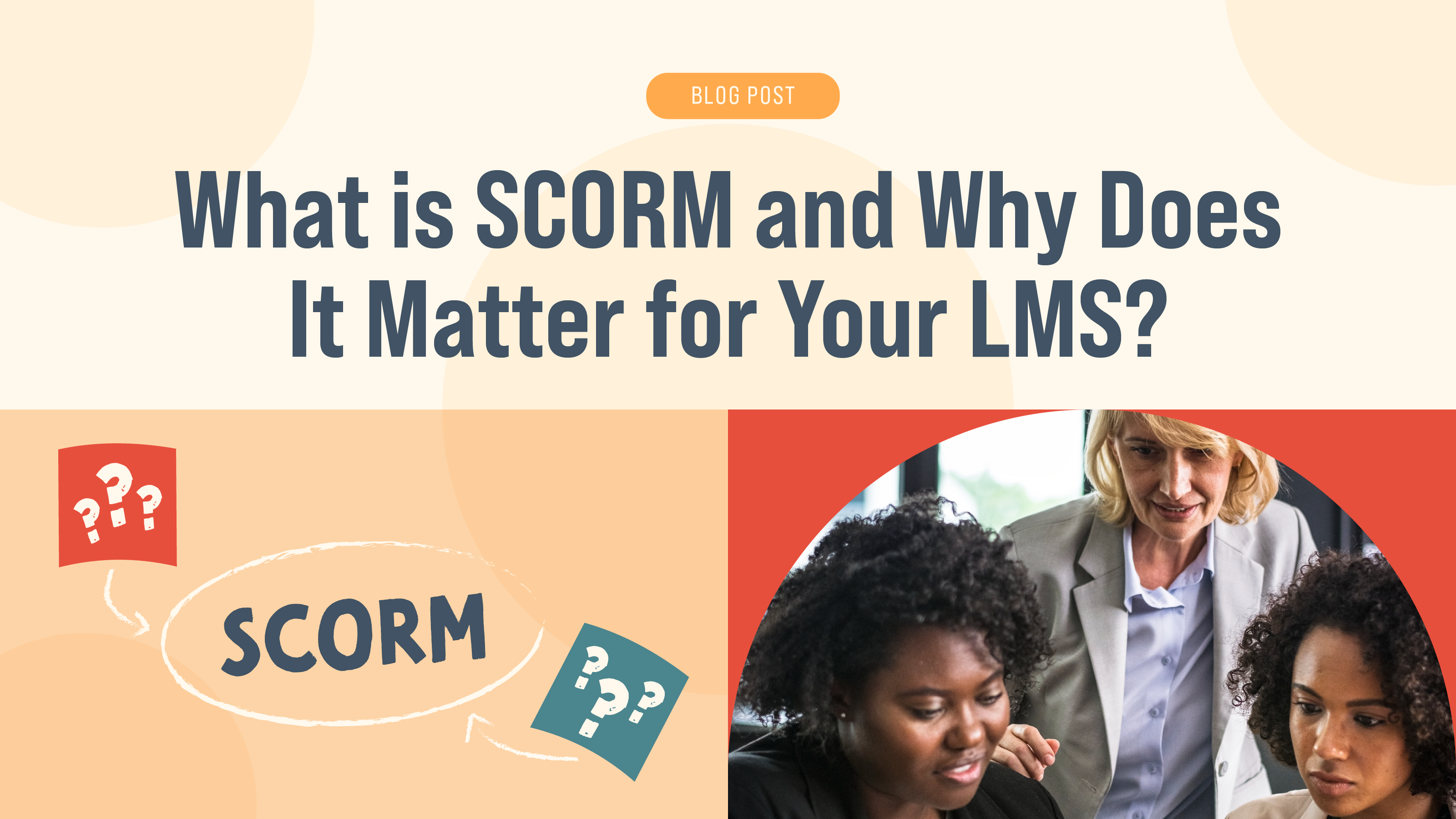Why You Should Use eLearning For Product Training
Regardless of the industry, you’re in, things are always changing. While it used to be challenging and expensive to keep your employees updated on the latest products and services, these issues are now a thing of the past. Online product training is an incredibly easy and effective way to ensure that your employees have the tools and information they need to sell your products against your competitors.
Challenges in Product Training
Product training is an essential facet for many businesses, but it doesn’t come without its challenges. Here are only a handful of common issues surrounding traditional product training.
- Salespeople have busy schedules and they must cover their target area in a short timeframe. This time crunch makes it stressful for salespeople to participate in training activities conducted in the classroom.
- For multinational organizations, it is difficult to train sales staff, often requiring many moving parts and logistical hurdles that can be costly and stressful to overcome.
- People learn the best in their native languages. In a classroom setting, it can be difficult to provide training in different languages.
- Learners may skip some important parts of traditional classroom training which cannot be covered again.
- It’s difficult to manually keep a record of training across a large organization.
This is where a new form of product training is beneficial.
Benefits of Online eLearning Courses for Product Training
Gives Access to Information Anytime, Anywhere
eLearning for product training gives employees easy access to information about product updates and features any time and from anywhere. Maybe they’re at a sales terminal and need to quickly log into an online training course to help a customer make a decision. Or maybe they have extra time at the end of the day and they want to brush up on learning new product information.
Regardless of where they are, they will be able to access the online training at the moment. This means that there’s no need to wait until there’s an in-person training session to access the information that they need. No more missing out on an important sale or losing a deal!

Reduces Training Time and Costs
Product training traditionally consisted of long and dry PowerPoint presentations or on-site instructors who traveled from one training location to another. Instead, today’s organizations can simply upload product knowledge training ideas onto their LMS. Employees will be able to log in and access the training course whenever their schedule allows.
This means there are no more flights, hotels, or printing fees that quickly make up the majority of a training budget. Time savings are significant as well; employees won’t have to sit for hours on end reading through manuals or listening to an in-person lecture. Instead, employees can be more mindful of how they spend their time and tap into training when it works for them.
More Engagement
Traditional product training courses have a reputation for being tedious and boring. Who wants to sit through a forced and boring lecture even if it’s about an exciting product? Product training doesn’t need to be executed this way.
Unlike traditional product training, online product training uses enticing video and audio elements to keep your employees engaged and excited about new material. Online product training can also involve real-world scenarios and simulations that can demonstrate how to navigate different situations.
By using interactive presentations and anecdotes, your team will get the most out of their training experience. Instead of sitting in a room and taking notes from a projector or PowerPoint presentation, your employees can simply log into the online training platform and get the training they need.
Customization of the Training Material
Content creation is another important aspect of eLearning for product training. Training material, regardless of the product, is not one-size-fits-all.
Let’s say that you’re an automobile firm that needs training help. The product training may be divided into two separate sections; the marketing and sales teams may have courses that focus on the features, benefits, and USP of the new vehicle while more technical teams focus on mechanical and engineering facets as well as troubleshooting.
Different teams require different training materials and information to execute their role properly. eLearning makes it easy to segment different teams within your organization and equip them with the skills and confidence necessary to succeed.
Improves Knowledge Retention and Job Performance
The importance of product knowledge training cannot be understated as it helps to improve the knowledge and job retention of your employees. If your employees do not remember the information they learned during product training, such as a product’s key features or unique selling points, they will have a more difficult time selling the product. When your employees are engaged in an immersive online product training experience, the company’s ROI will automatically increase.
This means that the information taken from the online course is committed to memory as opposed to it going in one ear and out of the other. Employee retention is another added benefit to knowledge retention and enhanced job performance; those who are happy with the training and excel at their job are more enticed to become permanent team members.
Ways of Using e-Learning for Product Training

Microlearning Approach
Your organization can lean into microlearning for product training or combine it with other learning strategies. For example, microlearning for product training is ideal to use for your sales team as it makes each lesson easily consumable and accessible.
For example, maybe a sales executive wants to go over the product’s features and USPs before a meeting. The executive can simply access the online learning portal from his or her computer or cell phone and get through the condensed material. The short length combined with the engaging content ensures that learners stay engaged.
Gamification
Gamification in product training is another effective method of eLearning for product training. If you’ve never heard of gamification, it is the use of game elements incorporated into the learning process such as scoreboards, quizzes, badges, stickers, milestones, and more.
Feel free to incorporate gamification into your product training to keep your learners motivated and excited about the learning process. By incorporating aspects such as quizzes and content check-ins, you can ensure that your learners are engaged with the material and don’t dread the learning process.
Scenario-Based Learning Approach
Another sound strategy for eLearning for product training is scenario-based eLearning. This means that you paint a real-world scenario for your audience in which the learning interacts with fake customers.
This effective eLearning module progresses your employees through different actions and circumstances to help them learn new skills and enjoy the process along the way. This low-pressure situation can equip your team with the confidence they need to perform well when it comes to real client interaction.
How to Develop eLearning for Product Training
1. Focus on The Problem and Solution
It sounds cliche, but the first step in developing eLearning for product training is to focus on the details of the problem and how the product can solve it. For example, maybe you want to encourage your team to talk to potential customers about problems or challenges they’re experiencing and how your product is the solution.
Although the approach seems basic, it is highly effective in understanding how the pitch will impact your potential customers, allowing you to make tweaks accordingly. As soon as your team understands the gap, they can use their knowledge of features and benefits to attract more customers.
2. Discuss Features and Benefits
Next, you’ll want to focus on the product itself. How good is it and how does it perform against your competition? Compile a list of features that add value to your product, but know that this may not be enough. In addition to looking for features of your products, your customers are also searching for the benefits that will help them. Make sure that your eLearning courses go over specific performance benefits that your customers can expect.
3. Analyze the Competition
Product training isn’t complete until you compare your product against other competitors in your industry. After all, your potential customers are doing their research to determine what product will check the most of their boxes. Make sure your courses clearly state who your competitors are and how your product(s) compare. This includes going over features, prices, benefits, and more.
4. Market Insight

The most impactful product training doesn’t stop at product knowledge. It should also include information about the industry such as the local markets as well as any socio-economic or political factors in play. These factors can impact a consumer’s decision on whether or not to purchase the product. Educating your team on the market as a whole gives them better insight into how your product or service will fit the unique requirements and lead to better sales.
5. Focus on the USP
If the above tactics haven’t already done so, make sure that your eLearning for product training hones in on your unique selling point. How do your brand and product stick out from your competition? Make sure to focus on your brand voice and have a sound understanding of how to talk about your message with potential customers. Consistency in how you talk about your USP is key!
6. Talk About the Audience
At the end of the day, the most effective product training courses are built on an understanding of your customers. Make sure that your product training allows your sales team to understand the types of customers and clients with which they are dealing. Doing so facilitates a consistent message and strategy across your organization and effectively reaches your potential customers.
7. Find a Great eLearning Development Company
One of the most important parts of your eLearning courses for products is to partner with a reputable eLearning development company. By partnering with a company like Allegro Media Design, you get access to our team of in-house professionals who have extensive experience creating custom courses to assist your business.
Reach Out to Allegro Media Design Today
As more and more teams are embracing a hybrid work model, now is an ideal time to transition into product eLearning courses. Are you ready to take the next steps toward effective product training? Our team at Allegro Media Design is here to help! Make sure to contact us today to see what we can do for you.
More Articles


Gamification in eLearning: Why It Works and How to Implement It

The Future of Employee Onboarding: eLearning Solutions That Work

What is SCORM and What Does it Matter

Accessibility in eLearning: Why It’s Essential and How to Achieve It

Microlearning: Bite-Sized Training for Big Results

Soft Skills Training Through eLearning: Building Better Leaders

How to Write Learning Objectives for eLearning Courses

When to Outsource Your eLearning Development (and How to Choose the Right Partner)

Employee Engagement in 2025: How eLearning Can Help

Training for a Multigenerational Workforce: Meeting Everyone’s Needs

The Future of eLearning: 4 Trends Shaping the Industry

How To Find the Right eLearning Developer

What Makes eLearning Effective?

Transform Your eLearning with the Magic of Animation

How to Use Audio to Enhance eLearning

Boost Learning Efficiency with Microlearning

Give Your Dated eLearning a Fresh Facelift

The Process of eLearning Part 5: The Implementation Phase

The Process of eLearning Part 4: The Development Phase

The Process of eLearning Part 3: The Design Phase

The Process of eLearning Part 2: The Analysis Phase

The Process of eLearning Part 1

Empower Your Workforce with Self-Paced Training

Elevate Your Training with Exceptional Visual Design

Taking the Confusion Out of SCORM

Embrace Efficiency: The Power of Outsourcing Your eLearning Production

Mastering eLearning: Elevating Corporate Training Through Scenario-Based Learning

Converting ILT to vILT: Embrace the Virtual Shift

Spice Up Your Boring Corporate Training With Animated Videos Copy

From Concept to Clicks: The Crucial Role of eLearning Developers

Lost in Translation: Mastering Multilingual eLearning

Training Crossroads: ILT or eLearning – What's Your Strategy?

How to Transform Boring Compliance Training

Last-Minute Crunch? Allegro Media Delivers Rapid eLearning Solutions Just-In-Time!

The Art of Chunking (or How to Eat a Whale)

Zen & The Art of eLearning Maintenance: Finding Harmony with Allegro Media Design

How to leverage ChatGPT for eLearning Applications

What Should I Look for When Hiring an eLearning Vendor?

Unveiling the Future of eLearning: Trends to Watch in 2024

Subject Matter Experts: Be Proud! Allegro loves you just how you are!

What in the World is an LMS?

Enhancing eLearning Engagement: The Power of Scenario-Based Interaction with Stylized 3D Motion Images

Enhancing eLearning with DALL-e: Adding Visual Reinforcement for Engaging Corporate Training

Choosing the Right Authoring Tool for Your eLearning Course

High Quality Audio is ESSENTIAL in Modern eLearning

What in the World is SCORM?

A Complete Guide to Leadership Training and Development

Benefits of Customer Service eLearning Training

14 Tips To Effectively Use Audio for eLearning Courses

10 Instructional Design Tips for Effective eLearning

Benefits of Voice Overs for Your Business

How to Create Great eLearning Content: 9 Tips

Video Marketing for Business: 10 Benefits of Promotional Videos

Gamification in the Workplace: Why and How to Use It

5 Best Practices for Training Remote Employees

How to Avoid eLearning Burnout and Fatigue

What Is Customer eLearning Training and Why Do You Need it?

8 eLearning Sales Training Best Practices: Tips & Use Cases

How to Effectively Use Videos in eLearning

Best Practices for Remote Employees Onboarding with eLearning

Why You Should Invest in Corporate eLearning?

How Can eLearning Reduce Employee Burnout?

How to Motivate Employees to Participate in eLearning Training: 9 Tips

eLearning Trends and Predictions: 2022 Forecast

7 Reasons to Outsource Your eLearning Course Development
%20to%20Virtual%20Instructor-Led%20Training%20(VILT).jpg)
How to Convert Instructor-Led Training (ILT) to Virtual Instructor-Led Training (VILT)

12 Best Tips on How to Improve Employee Training with Gamification in 2021-2022

What Is Compliance Training and Why Is It Important for Your Business?
%20vs.%20eLearning.jpg)
Instructor-Led Training (ILT) vs. eLearning: Which Should I Choose?

The Difference Between An Instructional Designer And An eLearning Developer
















